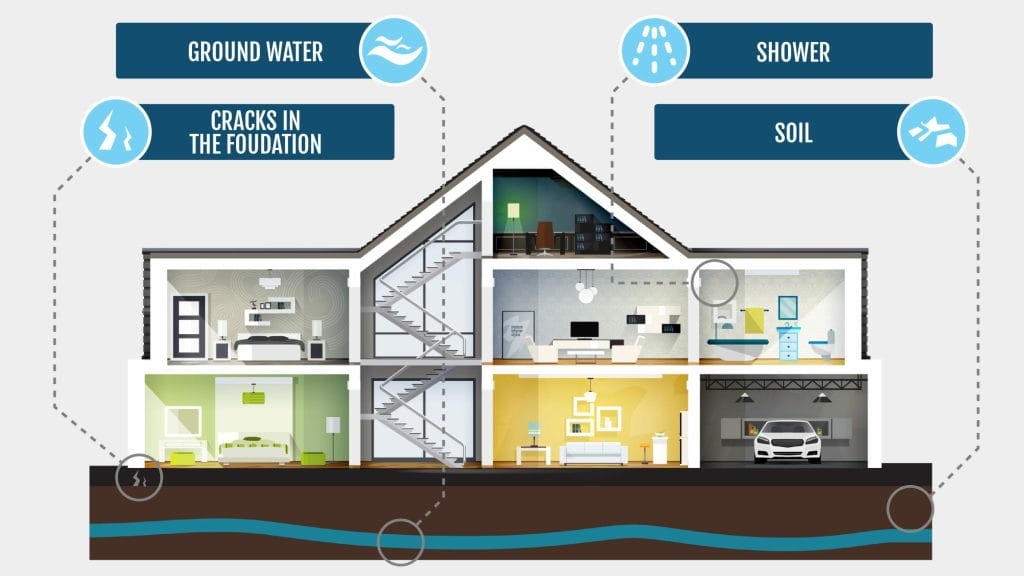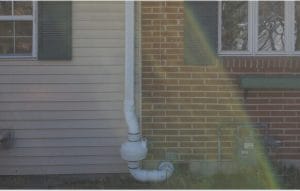When it comes to home radon safety, there are various concerns that homeowners often consider, such as fire hazards, burglaries, and carbon monoxide leaks. However, there is a hidden danger that is equally, if not more, dangerous – radon gas.
Radon is a radioactive gas that cannot be seen, smelled, or tasted, making it extremely difficult to detect without specialized testing. It seeps into homes from the ground and can accumulate to dangerous levels, posing a severe radon safety and health risk to occupants.
In this blog, we will delve into the significance of residential radon safety using radon mitigation and how it can safeguard your family’s health. If you’re looking for reliable radon mitigation services, our expert team is here to ensure your home is free from this hazardous gas.
Understanding the Dangers of Radon
Radon gas is a naturally occurring byproduct of uranium decay found in soil, rocks, and water. As it breaks down, radon turns into radioactive particles that can be inhaled into the lungs, leading to cellular damage and an increased risk of lung cancer. In fact, the Environmental Protection Agency (EPA) ranks radon as the second leading cause of lung cancer, accounting for an estimated 21,000 deaths in the United States each year. This risk is even higher for non-smokers, highlighting the severity of radon exposure.
The Invisible Threat: Why Radon Testing is Essential For Radon Safety
Since radon is invisible and has no distinct smell or taste, it’s impossible for homeowners to know if their property is at risk without conducting a radon test. The EPA recommends that all homeowners, regardless of location, should test their homes for radon. This is especially crucial if you live in areas with known high radon potential. Colorado has some of the highest levels in North America.
Professional radon testing services use advanced equipment to measure radon levels accurately. By testing your home, you can gain valuable insights into whether radon concentrations are at safe levels or require immediate mitigation, and ultimately if your home meets radon safety standards.

Health Risks Associated with Radon Exposure
Long-term exposure to elevated radon levels can have severe health implications, particularly for vulnerable individuals like children and the elderly. Children’s lungs are still developing, and the elderly often have weakened respiratory systems, making them more susceptible to the harmful effects of radon exposure. By investing in residential radon mitigation, you can significantly reduce the risk of lung cancer and ensure a healthier living environment for your loved ones.
The Radon Mitigation Process: Radon Safety For Your Home and Family
Radon mitigation is the process of reducing radon gas concentrations in your home to safe levels to achieve radon safety. Professional radon mitigation companies like ours have the expertise and tools to implement effective radon reduction strategies tailored to your home’s specific requirements.
- Radon Testing: The first step in radon mitigation is conducting a thorough radon test. Short-term and long-term testing methods can provide accurate measurements of radon levels in your home.
- Customized Mitigation Design: Our experts will design a personalized mitigation plan based on the radon levels detected in your home.
- Installation: A mitigation system is then installed by trained professionals. The most common method involves the installation of a vent pipe that connects to the soil beneath the home’s foundation, effectively venting radon gas outside.
- Sealing and Venting: Gaps and cracks in the foundation are sealed to prevent radon from entering living spaces. Ventilation methods are also used to improve the overall efficiency of radon removal.
- Post-Mitigation Testing: After installation, a post-mitigation radon test is conducted to ensure that the system effectievely reduces radon levels to safe limits.
Benefits of Radon Mitigation: Radon Safety
Investing in radon mitigation offers numerous benefits for homeowners, including:
- Healthier Living Environment: Radon mitigation reduces the risk of lung cancer and other respiratory issues associated with radon exposure, promoting a healthier living space for your family.
- Increased Property Value: Homes with certified radon mitigation systems may have higher resale values, as potential buyers prioritize a radon-free environment.
- Peace of Mind Of Radon Safety: Knowing that your home is free from the dangers of radon provides peace of mind and reassurance for your family’s well-being.
Conclusion
Radon safety is a crucial aspect of home maintenance that should not be overlooked. Radon gas is a hidden danger that can have devastating consequences for your family’s health. Investing in residential radon mitigation is a proactive step towards protecting your loved ones and ensuring a safer living environment.
At Colorado Radon Company, we are dedicated to providing expert radon mitigation services tailored to your home’s specific needs. Don’t take chances with your family’s health; schedule a radon test today and let our skilled team implement effective mitigation solutions for a radon-free home. Your family’s safety is our top priority, and we’re here to help you breathe easier.
